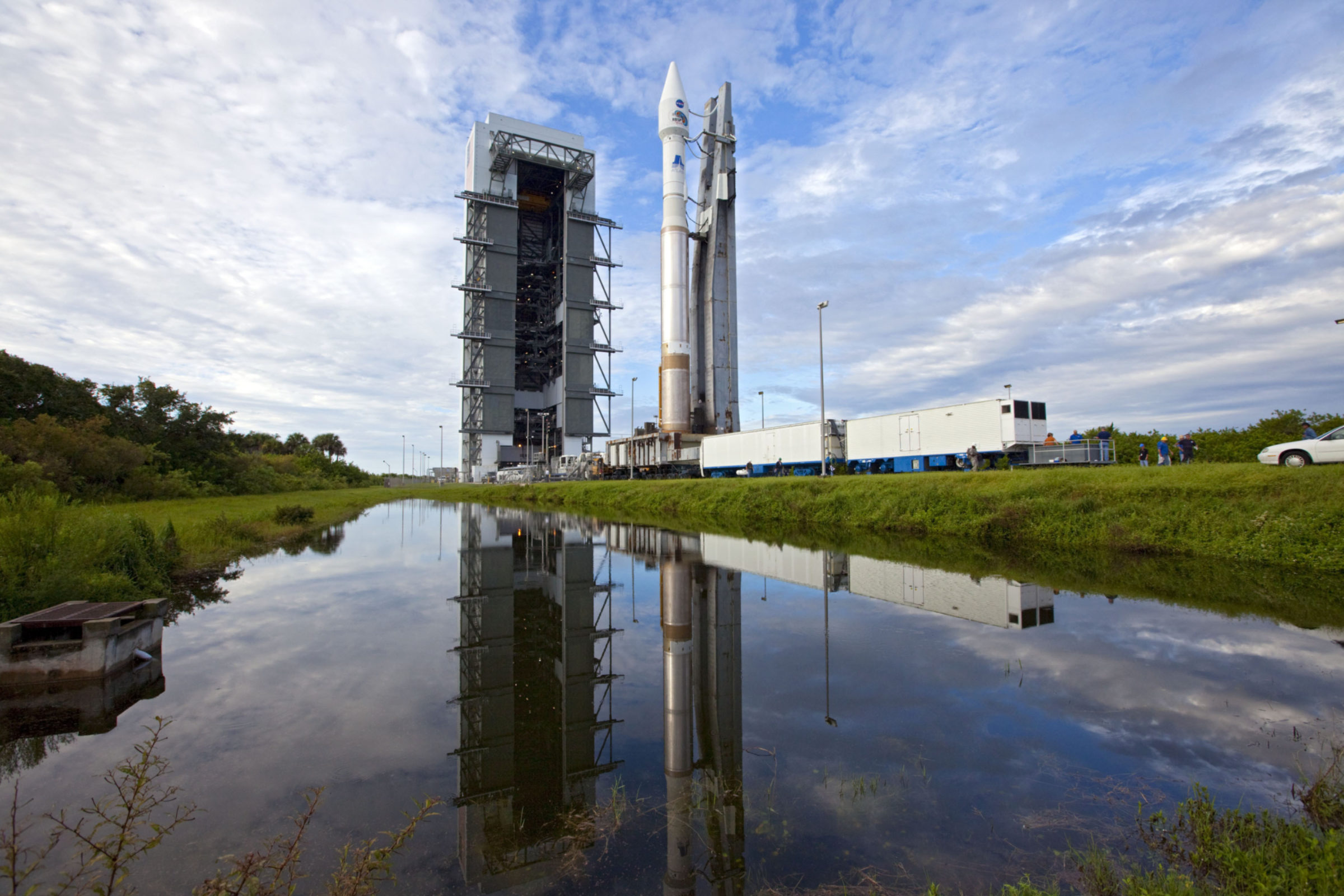Jason Davis • Aug 24, 2012
RBSP to explore decades-old radiation belt mysteries
"My God, space is radioactive!"
It is said that one of Dr. James Van Allen's colleagues uttered this phrase upon the discovery of energized particle belts surrounding the Earth. The Van Allen Radiation Belts, as they are now known, were found by Geiger counters aboard America's first satellite, Explorer 1. Fifty-four years later, NASA hopes its Radiation Belt Storm Probes will shed new light on this dangerous region in our planet's backyard.

The story of our radiation belts begins deep underground, in an ocean of liquid metal surrounding our planet's solid core. Here, dense, cooler regions sink inward, while light, hotter fluids gurgle outward, creating swirling hurricanes of molten metal. Add the Earth's rotation to the mix, and the entire volume is set in motion. The metal's movements creats an electric field. This, in turn, generates a magnetic field around the Earth, which amplifies the core's electric current in a self-sustaining dance.
Our nearby sun continually emits streams of charged particles -- mostly electrons and protons -- which slam into the magnetic field, smooshing it back towards Earth on the day side. On the night side, a long tail forms as the particles stretch the field into interplanetary space, perhaps thousands of times Earth's size.
Some of the sun's electrons and protons get trapped within this billowing magnetic field, along with stray cosmic rays, which are also charged particles. This forms two shimmering radioactive belts that change in shape and size. Estimates vary, but the inner belt is generally accepted to sit within 100 and 10,000 kilometers of the Earth's surface (100 km is the accepted boundary of space, and Earth's diameter is about 12,600 km). The outer belt sits between 13,500 and 58,000 km.
Satellites must either avoid the radiation belts or employ protective measures to shield their sensitive electronics from the radiation. Some, like the Hubble Space Telescope, are forced to turn off components when passing through particularly nasty areas, like the South Atlantic Anomaly, where the inner Van Allen Belt dips particularly close to the surface.
The Apollo astronauts had to traverse this dangerous zone en route to the moon, and were exposed to the equivalent of a few chest X-rays' worth of radiation. Fortunately, no significant solar storms -- which spew an extra dose of energized particles towards the Earth -- were recorded during the missions. Future space travelers will have to contend with this possibility. Astronauts in low-Earth orbit also receive higher doses of radiation when passing through the South Atlantic Anomaly. Occupants aboard the International Space Station have reported crashing laptops in the area, and many have noted an occasional "shooting star" in their vision from cosmic rays, similar to those induced by rubbing your eyes.
Scientists weren't positive of the belts' existence until the data started coming in from Explorer 1 in 1958. Van Allen's team noticed that sometimes, radiation counts from the orbiting satellite were high, but other times, none registered at all. Complicating matters was the fact that Explorer 1 had no data recorder; it could only send information in real-time when it passed over a tracking station.
Explorer 2 became a casualty of America's early rocket mishaps, failing to reach orbit. Explorer 3 contained the much-needed data recorder, and scientists soon realized the counter registered zero when it was overwhelmed with radiation, not because it detected none at all. The discovery was named in honor of Van Allen.

Since Van Allen's discovery, many details about the belts remain a mystery. For instance, when the sun unleashes its fury during a solar storm, how long do its subatomic visitors stick around the Earth's magnetic field, and what causes them to leave? This is just one of the many questions NASA's Radiation Belt Storm Probes hope to answer.
RBSP, as they are known, are two identical satellites that will cruise around Earth in elliptical orbits. At close approach, they'll be only about 100 kilometers higher than the International Space Station. At their furthest, they'll cruise out to almost three times the Earth's size, right through the heart of the Van Allen Belts.
The two-spacecraft design allows scientists to compare notes between the probes, as if they were buoys bobbing in an ocean. Their armada of tools allows them to track how energized particles move around in the radiation belts. A proton spectrometer measures the high-energy protons passing effortlessly through the spacecraft. Four antennae tipped with metal balls will record the strength of electric fields pushing particles around the belts, along with another instrument that will record magnetic field and plasma wave strength. Another device will hunt down low-energy electrons, protons, and oxygen and helium ions.
RBSP is the second member of NASA's Living With a Star program, which aims to learn how the Sun impacts life on Earth. The first spacecraft in the fleet is the Solar Dynamics Observatory, launched in 2010. Researchers will eventually be able to correlate RBSP data with other Sun and Earth-observing spacecraft to get a better picture of our near-Earth neighborhood.
James Van Allen's research has come full circle. The current launch time for RBSP is Saturday, August 25 at 4:07 a.m. EDT (8:07 UTC).
The Time is Now.
As a Planetary Defender, you’re part of our mission to decrease the risk of Earth being hit by an asteroid or comet.
Donate Today

 Explore Worlds
Explore Worlds Find Life
Find Life Defend Earth
Defend Earth

